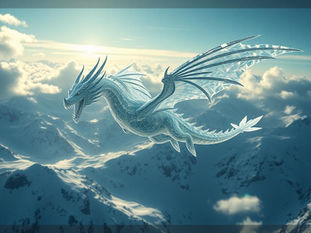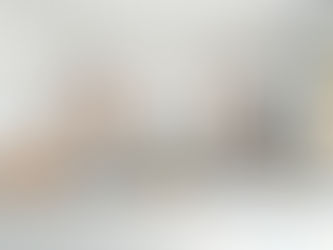
Can a Human Designer Outperform Midjourney for Martian Rocket Art?
May 6
4 min read
0
0
0

Generative AI tools like Midjourney are changing creative workflows. Headlines often ask if AI will replace human designers. This post dives into a direct comparison. Can a professional graphic designer create better art than Midjourney? The challenge: design an image showing a rocket on the planet Mars with detailed surroundings and an extraterrestrial feel.
We will look at three main parts of the design: the environment, the rocket, and the astronauts. Points are given based on how well each part is done and how everything fits together.
Midjourney's Starting Point
To begin, Midjourney was given multiple requests for a rocket on Mars scene. Midjourney produced a range of images. Most placed the rocket clearly in the middle. Rocks and stones were often shown on the sides. Midjourney used red and blue colors, capturing the feel of Mars well. Some images even included a road or path.
The AI results were quite impressive. They set a high standard for the designer in this challenge.
Building the Martian Environment
The designer started by trying to match Midjourney's approach for the environment. This involved taking images and blending them to create the stony ground and rocks on the sides. This helped build that alien atmosphere quickly.
The designer also decided to use the red and blue color tones seen in Midjourney's images. These colors work well for a Mars theme and help create a surreal, otherworldly mood.
Adding a path or road was attempted next, similar to some AI examples. However, this proved difficult for the designer, taking several tries and significant time. Getting it to look right was a struggle. In this first category, the point for the environment went to the AI.
Many digital artists and designers now use AI tools like Midjourney to quickly explore ideas or generate base images. Managing dozens or hundreds of AI-generated variations can become overwhelming. Consider using the TitanXT Midjourney Automation Suite to help organize and streamline your workflow when working with large batches of AI images.
Adding the Rocket
Next, the focus moved to the rocket. The designer aimed to make the rocket the main point of the picture. To save time, a rocket designed for a past project was used. The goal was to place it so it would catch the viewer's eye right away.
Adding light and shadows was a key step after placing the rocket. The designer compared the work to Midjourney's results and realized the light needed more impact. A bright glow was added around the rocket engine to make it look like it was truly part of the scene. This also allowed for more dynamic lights and shadows around the rocket itself, helping it stand out.
After adding the rocket's light source, the designer adjusted the lighting across the rest of the scene. Rocks and walls needed more highlights and stronger shadows to fit the new light and enhance the alien atmosphere. Background details, like other planets, were also added.
Both the AI and the designer performed very well in creating the rocket. For this category, it was considered a tie.
Bringing in the Astronauts
The final part of the challenge was adding astronauts. The designer worked to place the first astronaut into the picture smoothly. This involved adding strong rim lights to create a bright edge, darkening the backs away from the main light source (the rocket engine), and adding a long drop shadow to blend the figure into the ground.
More astronauts were added using similar techniques. The designer also decided to add a quad bike vehicle next to an astronaut, applying the same lighting and shadow methods to make it fit in. The attempt was made to add lines on the ground that looked like tracks left by the vehicle.
When evaluating the astronauts, the designer felt the human-created astronauts had more detail and more realistic light and shadows. However, the AI's performance was also seen as impressive. The score at this point was tied 2-2.
Final Touches and The Result
Before finishing, the designer took another look at the path element that was difficult earlier. A new attempt was made by hand-drawing lines and shaping them to fit the perspective. Adding more lines with different blending modes helped create the effect of tracks from the quad bike.
Minor details were added, and a final filter was applied to the whole image.
With the score tied at 2-2, the decision of who created the better overall image was left to the audience watching the video. Both AI and the human designer showed strong abilities.
Enhance Your Design Workflow
Whether you are a designer using AI or exploring generative art, managing your creations can be complex. Speed up your process and get better control over your Midjourney outputs. Discover how the TitanXT Midjourney Automation Suite can help you automate tasks and refine your work.
Conclusion
This challenge highlighted the strengths of both AI tools like Midjourney and human design skills. AI can quickly generate detailed and impressive images, setting a strong baseline. Human designers can bring specific vision, intricate control over details, and layered adjustments to achieve specific looks and narrative elements. The final result was a tie, showing that both approaches have value. The future of design might involve the powerful combination of AI tools and human creativity.






